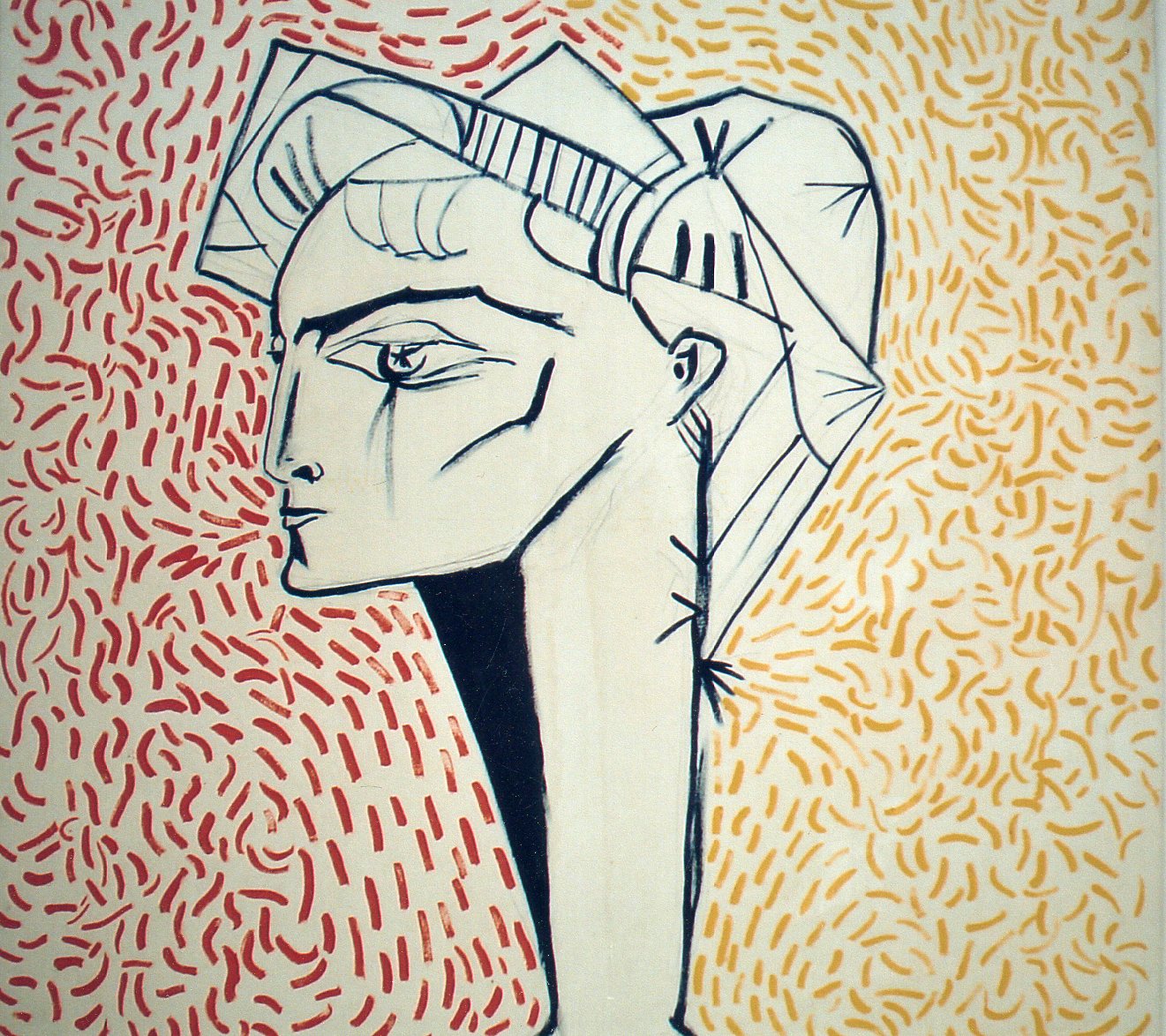Portrait of Jacqueline Roque with Claude Monet and Vincent van Gogh 1984, Oli on Canvas, 120×120 cm, FILOART
This work deals with a certain period of art history and builds a bridge starting with Impressionism, Postimpressionism, across Cubism and Abstract art to Pop art and Conceptual art. How- ever this work does not belong to any of these styles. On the contrary, these styles/art movements are the topic (the “mod- els”) of this work. A citation from Picasso’s painting “Jacqueline with flowers”* (1954) appears as a central (and only) figure of this work. Only the portrait of Jacqueline Roque is taken from this work, without the body. We can notice that there are only the outlines of her profile, without the colored surfaces visible on the cited work. This portrait is placed in the middle of the painting and is accompanied by an “undefined” background. What do the lines in the background symbolize?
If we watch the background without the portrait, it gives us an impression of a kind of Abstract work. The yellow and red lines, like two poles, develop throughout the entire background of this work. Even though this work looks superficial at first glance, it is complex to define.
To try and understand the background of this work, we have to analyze the long title first, which, apart from the name of Picas- so’s wife, includes the names of two other artists. This indicates that maybe their work is also part of the topic.
For example, if we take to compare the work of Claude Monet, “Impression, sunrise” (1872) and Vincent van Gogh, “Starry Night” (1889) with this work (“Portrait of Jacqueline Roque with Claude Monet and Vincent van Gogh”) then we can see some similarities between these works. There are lines and brush strokes similar to the lines and brush strokes of these painters which are “repeated” in this work. It is fascinating that only some lines are “sliced” and “picked out” from these two works and “placed” on the white canvas. The rest of the two works remain “hidden” or “behind the white”.
Three artists from different art periods met in one work, each with his own lines, and with their cited lines. The lines are the object of the work; they have the same place of importance like the portrait (of Jacqueline). They (the lines) are just moving, they do not show anything in particular. However the lines stand alone, representing only themselves.
Through an eclectic compound of several art movements (Im- pressionism, Postimpressionism and Cubism) the work begins to get something more than just what the work is representing. Citing the works (of Monet, van Gogh and Picasso) in a minimal way, and placing them in a different context conceptually the work receives another layer and obviously makes an Abstract reference.
On the other hand, a reduced color palette (of primary colors, red yellow and blue) and a “magnetic field” raster in the back- ground give the work a visual Pop Art impact. The work has a theme from art history, while at the same time also belonging to history, because it was made in 1984.
If we would try to explain this tautological work in one sen- tence, it would be: the apple stays a model for the apple.*
________________
*Is Jacqueline Roque really in this (Portrait of Jacqueline Roque with Claude Monet and Vincent van Gogh) work? She doesn’t look like Picasso’s Jacqueline Roque. But does the painting by Picasso look like the real Jacqueline Roque? No. When you look closely you will see that the latest portrait of Jacqueline (1984) is much closer to her than to Picasso’s work.
